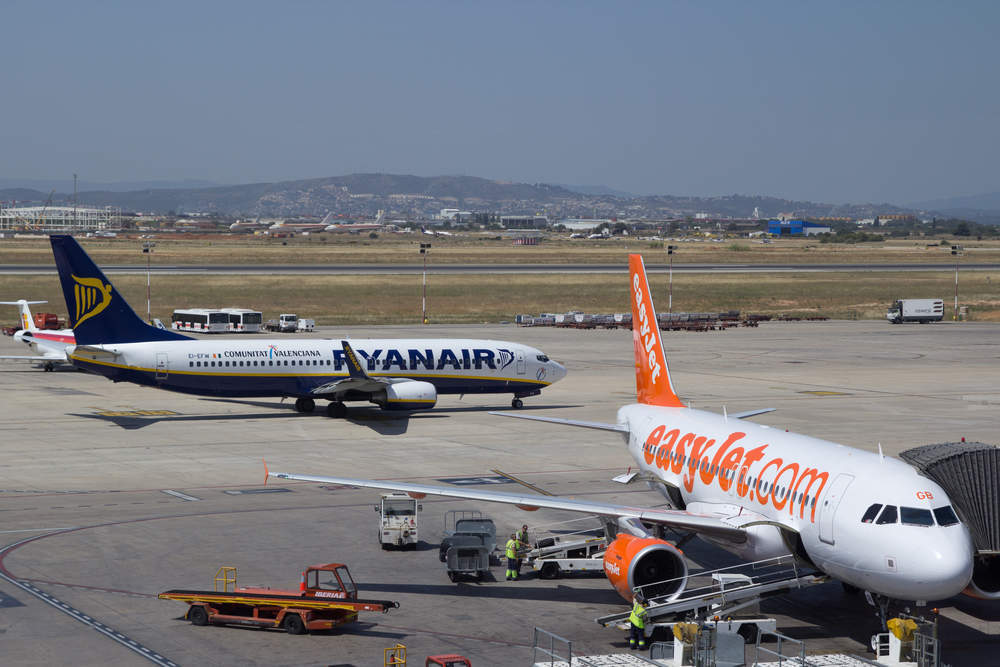Back in the good old days, air travel was seen more as a luxury treat, rather than a necessity.
Passengers dressed up nicely, expecting to board their plane, and to enjoy their meal, drinks and the unique treatment by the glamorous air hostesses before arriving at their destination.
However, as air transportation started becoming more common, with the number of passengers rising rapidly, the air travel experience began to change too, bringing us to the current airline revolution characterised by the low-cost carriers.
Over the last two decades, the rise of short-haul low-cost carriers has been winning fans, completely transforming the industry.
The number of passenger seats sold by low-cost carriers increased by 88 percent between 2009 and 2016 – from 908m to 1.7bn, according to GlobalData.
This rapid rise, combined with substantial technological improvements in the aviation industry, resulted in fare reductions of around 40 percent since 2000.
How well do you really know your competitors?
Access the most comprehensive Company Profiles on the market, powered by GlobalData. Save hours of research. Gain competitive edge.

Thank you!
Your download email will arrive shortly
Not ready to buy yet? Download a free sample
We are confident about the unique quality of our Company Profiles. However, we want you to make the most beneficial decision for your business, so we offer a free sample that you can download by submitting the below form
By GlobalDataIn the not so distant past, an international trip remained an unaffordable dream for many.
Yet, The low-cost carriers phenomenon and the subsequent abundance of lower fares allowed many people to travel for the first time, and others to travel more regularly.
Given the propensity of low-cost carriers to fly from/to second and third tier cities, new air routes have brought life to several destinations.
At the same time, the rapid rise of low-cost carriers has given rise to an environment of fierce competition in the skies that is increasingly painful for legacy carriers.
The intensification of competition is pushing inefficient airlines out of the market, while urging ‘full-service’ companies to re-examine their strategy and operation, either by slashing costs, joining alliances or cooperating with low-cost carriers.
Last summer, Air Berlin and Italy’s flag carrier, Alitalia, were the most recent victims of this ferocious competition.
Both companies filed for bankruptcy after their major shareholder, Etihad, refused to finance the airlines on the basis of their deteriorating financial positions.
Similarly, full-service airlines are increasingly moving towards the model of low-cost carriers in an attempt to cut their operational costs and boost their competitiveness in a period when price is the most determinant factor for consumers – with British Airways starting to charge for in-flight food on European flights being a prominent example.
According to a recent GlobalData survey 58 percent of respondents across the world argued that cost is very important when choosing an airline, but only 44 percent argued the same when it came to comfort.
Across the pond in the US, budget airlines such as Spirit, Allegiant Air, and Frontier Airlines have been similarly slashing domestic fares, giving rise to a summer of fierce price wars while causing increased trouble to the so-called big three: United, American and Delta.
According to travel news site Skift, whereas the cost per seat-mile excluding fuel for Spirit totalled $5.83, the same was $10.28 for United, pointing out the clear cost advantages of the ultra-low cost carriers.
Further away, Emirates is seeking to integrate its operations with flydubai; an low-cost carriers that belongs to the government of Dubai.
This move falls under the current trend of legacy airlines establishing low-cost carriers subsidiaries, or forming new and closer links with budget airlines as a response to the rapid changes and competition in the industry.
As for long-haul air transportation, Tim Clark, president of Emirates, believes that it is simply a “matter of time” before low-cost airlines forcefully enter the market.
Norwegian for instance is already running low-cost flights from Europe to several US destinations including Boston, New York, and Los Angeles.
Recently low-cost airline Scoot also announced its plans to launch non-stop flights from Europe to Indian megacities such as Delhi and Mumbai.
Likewise, EasyJet just introduced its worldwide service, through which customers can book connecting flights to Asia, North and South America on easyJet’s website.
In the midst of this worrying environment for air carriers, the CEO of Ryanair, Michael O’Leary predicted that five years from now ”there will be just five European airlines, with Ryanair and its competitor EasyJet, of course, being two of them”.
Whether O’Leary’s prophecy will come true is unknown.
Undoubtedly though, low-cost carriers – the companies we love to hate – are here to stay, leading the way in the global tourism boom and making travel accessible to all.
The glamour of travel may have long faded away, but the low-cost carriers phenomenon has proved once more that competition is the most powerful means to reduce market inefficiencies, while meeting the real needs of consumers.








Related Company Profiles
easyJet Plc
Ryanair Holdings Plc
Frontier Airlines Holdings, Inc.
British Airways Plc